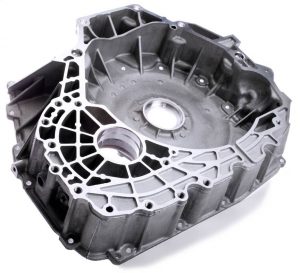Die Casting and How to Cut Costs in the Manufacturing Process
In a few agencies, expense, quality and speed are three parts in a vibrant formula that forces their consumers to make choices they might not want to make. For example, a company may tell their consumer that if the expense is to remain a constant, however the speed needs to increase, then the quality of the casting would have to be decreased to compensate. Equally, if the consumer tells us that the cost has be decreased, the company may tell them that either speed or quality or both must be minimized in order to keep the price down. Numerous consumers, nonetheless, are no longer going to make those sacrifices to keep costs down. They want it all. However, can an organization produce castings quicker, of higher quality and decrease expenses at the same time? The answer is no, at least if we continue to do business as we have been doing it all along. Yet we understand that something will have to alter. Till recently, much of the process of high pressure die casting has been made by the use of trial and error, and tried and true approach; yet one that also can drive prices up, limit quality and delay production.
Sadly, some jobs are so tricky that making use of'testing suggests that a good quality casting is never produced; the end result is a casting that does not meet the customer's needs, while costing a great deal of money for the die caster. There is a procedure simulation software tailored to the details of the high-pressure die casting procedure helps to prevent the unpredictabilities of 'trial and error' and offers a clear image for the die caster about what to expect throughout the die design and casting procedure. With this software, it is possible for the engineers to imitate, comprehend, alter and optimize the casting conditions before the procedure is ever presented to the shop floor.
Offered on the marketplace for a couple of years already, procedure simulation software is made use of by the modern-day die caster each day. The first simulations are done as a part of the estimating process in order to get a better understanding about the job. After winning the bid, the die design is simulated. The feeding and overflow technique along with the cooling and heating route areas are altered up until a great casting condition is revealed. Possible weak points can be figured out, improvements created, and simulations rerun until the customer's objective is fulfilled and prior to casting is available. Making use of simulation today's engineering procedure is considerably faster, the casting quality greater, the costs lower - and the customer can get the quality, price and speed they desire, while providing the die caster with an improved bottom line - and a satisfied client.
Validating the cost of the simulation software application, however, is not a simple job. It is something to identify costs when the die is in the machine and the process produces a high scrap rate; however understanding the casting expenses when making use of simulations is a far more difficult task. In general, the die casting machine and operator cost per hour are easy to estimate. Harder is tracking the melting cost or the use of oil, power, water or spray lube for each machine used in die casting procedure, especially when they aren't being used for production. Naturally, if you can obtain the casting right by the use of a simulation, you won't have those preliminary production costs to determine.
Sadly, some jobs are so tricky that making use of'testing suggests that a good quality casting is never produced; the end result is a casting that does not meet the customer's needs, while costing a great deal of money for the die caster. There is a procedure simulation software tailored to the details of the high-pressure die casting procedure helps to prevent the unpredictabilities of 'trial and error' and offers a clear image for the die caster about what to expect throughout the die design and casting procedure. With this software, it is possible for the engineers to imitate, comprehend, alter and optimize the casting conditions before the procedure is ever presented to the shop floor.
Offered on the marketplace for a couple of years already, procedure simulation software is made use of by the modern-day die caster each day. The first simulations are done as a part of the estimating process in order to get a better understanding about the job. After winning the bid, the die design is simulated. The feeding and overflow technique along with the cooling and heating route areas are altered up until a great casting condition is revealed. Possible weak points can be figured out, improvements created, and simulations rerun until the customer's objective is fulfilled and prior to casting is available. Making use of simulation today's engineering procedure is considerably faster, the casting quality greater, the costs lower - and the customer can get the quality, price and speed they desire, while providing the die caster with an improved bottom line - and a satisfied client.
Validating the cost of the simulation software application, however, is not a simple job. It is something to identify costs when the die is in the machine and the process produces a high scrap rate; however understanding the casting expenses when making use of simulations is a far more difficult task. In general, the die casting machine and operator cost per hour are easy to estimate. Harder is tracking the melting cost or the use of oil, power, water or spray lube for each machine used in die casting procedure, especially when they aren't being used for production. Naturally, if you can obtain the casting right by the use of a simulation, you won't have those preliminary production costs to determine.

Comments
Post a Comment